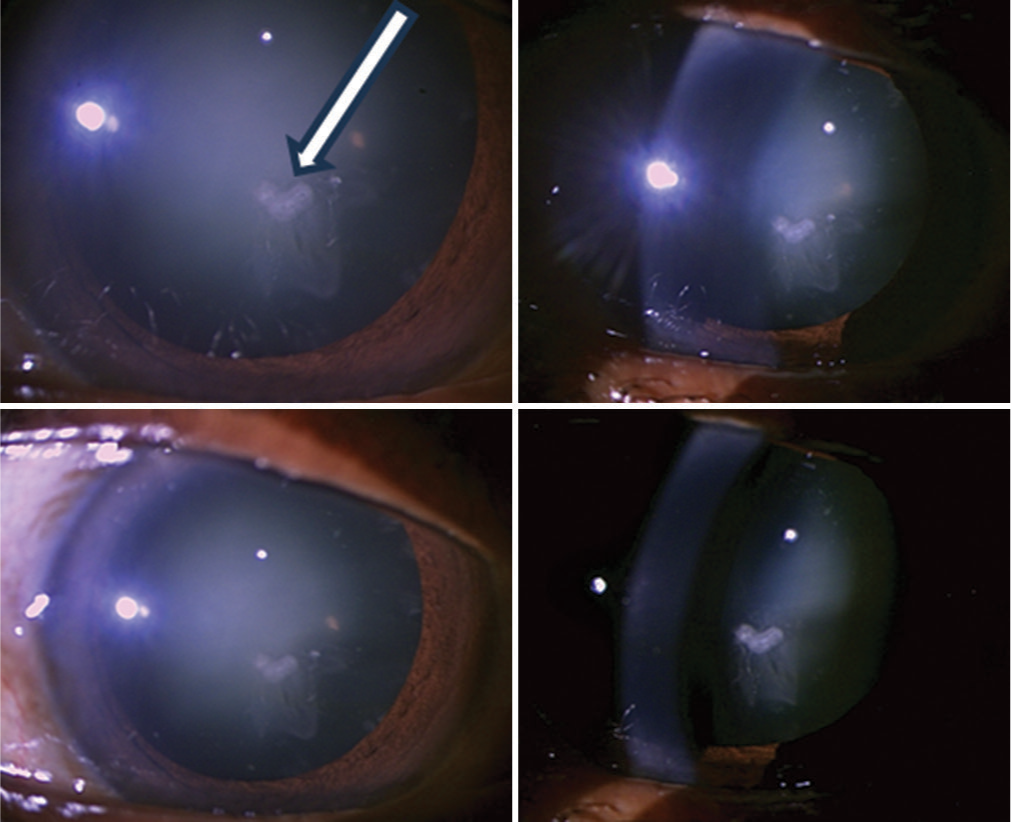Translate this page into:
Love-struck lens: A romantic twist in visual decline

*Corresponding author: Dhruval Ashok Khurana, Department of Ophthalmology, Aditi Eye Hospital, Dahod, Gujarat, India. dhruvkhurana1996@gmail.com
-
Received: ,
Accepted: ,
How to cite this article: Khurana DA. Love-struck lens: A romantic twist in visual decline. Lat Am J Ophthalmol. 2024;7:10. doi: 10.25259/LAJO_5_2024
Abstract
A 54-year-old male with no systemic comorbidities presented with painless vision decline. Examination revealed age-related lens changes, notably a heart-shaped opacification in the right eye. Corrective glasses were prescribed.
Keywords
Cataract
Heart-shaped opacification
Lens changes
INTRODUCTION
Cataracts are a common cause of visual impairment worldwide, particularly in the elderly population. They typically present with a gradual onset of painless vision loss and can significantly impact daily activities. While cataracts are often associated with aging and systemic comorbidities such as diabetes or hypertension.[1] They can occasionally manifest as unique and incidental findings, as observed in the case presented here.
DISCUSSION
In this case, a 54-year-old male presented with painless and gradual deterioration of vision, without any known systemic comorbidities. Visual acuity assessment revealed impaired vision in both eyes, with age-related lens changes observed in the right eye. Notably, a distinct heart-shaped opacification [Figure 1] was noted in the right eye (denoted by a white arrow), representing a unique and incidental finding in this instance.

- Heart shaped opacification was noted in the right eye (denoted by a white arrow).
CONCLUSION
In this case, a notable feature was the presence of a heart-shaped opacification within the lens of the right eye, which represented a unique aspect of the patient’s condition. Despite this distinctive finding, the patient was managed conservatively with prescription glasses for vision correction.
Ethical approval
The Institutional Review Board approval is not required.
Declaration of patient consent
The authors certify that they have obtained all appropriate patient consent.
Conflicts of interest
There are no conflicts of interest.
Use of artificial intelligence (AI)-assisted technology for manuscript preparation
The authors confirm that there was no use of artificial intelligence (AI)-assisted technology for assisting in the writing or editing of the manuscript and no images were manipulated using AI.
Financial support and sponsorship
Nil.
References
- Cataract In: StatPearls. Treasure Island, FL: StatPearls Publishing; 2024. Available from: https://www.ncbi.nlm.nih.gov/books/NBK539699 [Last accessed on 2024 Feb 27]
- [Google Scholar]






